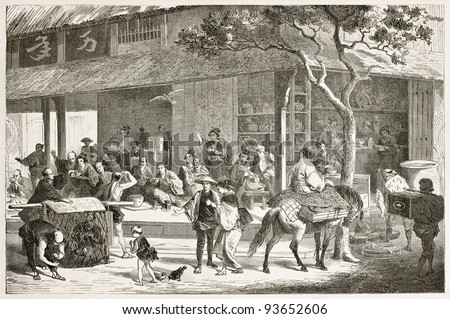Marco Polo was known as an Italian explorer, writer, and merchant. He was born on September 25, 1254, in Venice. His parents were Niccolo Polo and Nicole Anna Defusesh.
Marco Polo's travels were important for medieval Europe and people. He and his relatives visited many differents parts of Asia.
Their travels lasted several years. Marco Polo noticed differences between European and Asian countries. He visited other Empires and brought some things and food back.
Polo's travel showed cultures of: India, China, Japan, and etc. In Middle Ages people of the West didn't know about them.
When Marco Polo returned to Europe he wrote a book named Book of the Travels of Marco Polo (1300). Christopher Columbus was inspired by this book.
Marco Polo had a wife: Donata Badoer. They had three daughters: Fantina, Bellela, and Moretta.
Polo died on January 8, 1324, in Venice.
Showing posts with label Japan. Show all posts
Showing posts with label Japan. Show all posts
Wednesday, March 4, 2020
Great people: Marco Polo.
Labels:
Asia,
biography,
book,
China,
Christopher Columbus,
countries,
culture,
Europe,
food,
history,
images,
India,
Japan,
Marco Polo,
Medieval,
Middle Ages,
people,
things,
travels
Sunday, June 18, 2017
Japan.
Timeline of Japanese history: Jomon Period (1400-300 B. C.), The Yayoi Period (400 B. C.-250 A. D.), Kofun Period (250-538), Asuka Period (538-710), Nara Period (710-794).
Each of these periods are important for Japanese history. For example, Buddism appeared during Asuka Period (538-710).
Japanese culture include art, mythology, literature, and philosophy. Also, civilization had own emperors and laws.
Ancient Japanese history has similarities with Ancient China.
Medieval and Early Modern Japan have many difference with ancient history.
Statues and sculptures could talk about ancient Gods.
Many buildings such as: temples, houses, and castles have traditional eastern design.
Source of image:
https://www.shutterstock.com/ru/image-photo/traditional-japanese-tea-house-old-illustration-93652606?src=YrihjQ1hJMy5ftRMi0Tdjw-1-14

Source of image:
https://www.shutterstock.com/ru/image-illustration/old-paper-oriental-cherry-bird-51565066?src=YrihjQ1hJMy5ftRMi0Tdjw-1-89

Source of image:
https://www.shutterstock.com/ru/image-photo/osaka-castle-japan-137392853?src=YrihjQ1hJMy5ftRMi0Tdjw-2-26

Each of these periods are important for Japanese history. For example, Buddism appeared during Asuka Period (538-710).
Japanese culture include art, mythology, literature, and philosophy. Also, civilization had own emperors and laws.
Ancient Japanese history has similarities with Ancient China.
Medieval and Early Modern Japan have many difference with ancient history.
Statues and sculptures could talk about ancient Gods.
Many buildings such as: temples, houses, and castles have traditional eastern design.
Source of image:
https://www.shutterstock.com/ru/image-photo/traditional-japanese-tea-house-old-illustration-93652606?src=YrihjQ1hJMy5ftRMi0Tdjw-1-14

Source of image:
https://www.shutterstock.com/ru/image-illustration/old-paper-oriental-cherry-bird-51565066?src=YrihjQ1hJMy5ftRMi0Tdjw-1-89

Source of image:
https://www.shutterstock.com/ru/image-photo/osaka-castle-japan-137392853?src=YrihjQ1hJMy5ftRMi0Tdjw-2-26

Subscribe to:
Posts (Atom)


